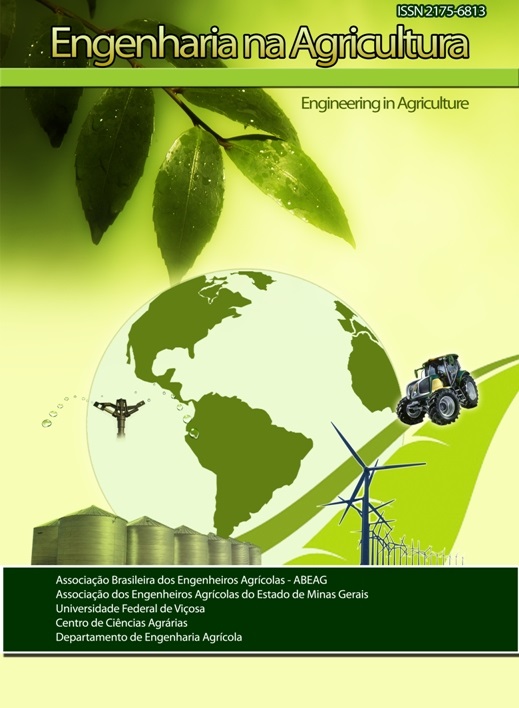HARGREAVES-SAMANI EQUATION CALIBRATED IN DIFFERENT TIME BASES FOR SETE LAGOAS, MG, BRAZIL
DOI:
https://doi.org/10.13083/reveng.v25i1.742Keywords:
distribuição de probabilidade, evapotranspiração de referência, FAO Penman-MonteithAbstract
The FAO Penman-Monteith method (FAO-PM) for determination of the reference evapotranspiration (ETo) may have its application restricted by lack of one or more wheather data. One of the alternative methods with lowest data requirement is the Hargreaves-Samani (HS). This study aimed to evaluate the performance of the HS method on its original form and after calibration on annual, semiannual, quarterly and monthly basis, compared to the FAO-PM method. For this, it was used a time series of 86 years of daily weather data obtained from a conventional meteorological station of INMET in Sete Lagoas, MG, Brazil. It was calibrated the coefficients and exponent of the HS equation by minimizing the mean absolute error. Afterwards the analysis of descriptive statistics was performed. To test the feasibility of comparative tests and to evaluate the fit of the probability distributions of the daily values of ETo, it was applied the Kolmogorov-Smirnov and Mann-Whitney test, respectively, at 5% significance level. Calibration of HS method removed the trend of systematic overestimation of daily ETo values as compared to FAO-PM. There was no significant difference between the probability distributions of daily ETo values calculated by the HS method calibrated at different time basis.Downloads
Downloads
Published
How to Cite
Issue
Section
License
Authors who publish with this journal agree to the following terms:
The author(s) authorize(s) the publication of the text in the journal;
The author(s) ensure(s) that the contribution is original and unpublished and that it is not in the process of evaluation by another journal;
The journal is not responsible for the views, ideas and concepts presented in articles, and these are the sole responsibility of the author(s);
The publishers reserve the right to make textual adjustments and adapt texts to meet with publication standards.
From submission, the author is fully conceding the paper's patrimonial rights to the publication, but retaining the owner of its moral rights (authorship and paper's identification) according to Creative Commons Attribution-Noncommercial.








 Licensed by
Licensed by 